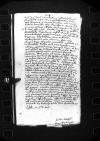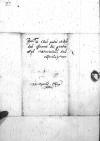List #2756
Stanisław HOZJUSZ (HOSIUS) do Ioannes DANTISCUSBrest-Litovsk, 1544-09-09
| odebrano Elbing (Elbląg), 1544-09-20 Rękopiśmienne podstawy źródłowe:
Publikacje:
| ||||||
Tekst + aparat krytyczny + komentarz Zwykły tekst Tekst + komentarz Tekst + aparat krytyczny
Reverendissimo in Christo Patri et Domino, domino
Reverendissime Domine, domine colendissime.
Officiosissimam servitutis meae commendationem.
Cum certi hominis potestas daretur, nolui ms. noli(!)
⌈noluinolui ms. noli(!)
⌉ meis litteris vacuum eum dimittere. Quae sint in commissione addita, posteaquam legerit, Reverendissima on the margin⌈ReverendissimaReverendissima on the margin⌉ Dominatio Vestra cognoscet.
Qui nunc est rerum status, bonis omnibus displicet. De desiderato dico. Quae ex castris
Piiotrckovia conflagravit. Ad curias tamen dominorum non pervenit ignis.
Opto Reverendissimam Dominationem Vestram diu esse incolumem et felicem. Cuius me gratiae commendo.
Ex
Eiusdem Reverendissimae Dominationis Vestrae servitor deditissimus


 AAWO, AB, D. 19, No. 37_2
AAWO, AB, D. 19, No. 37_2